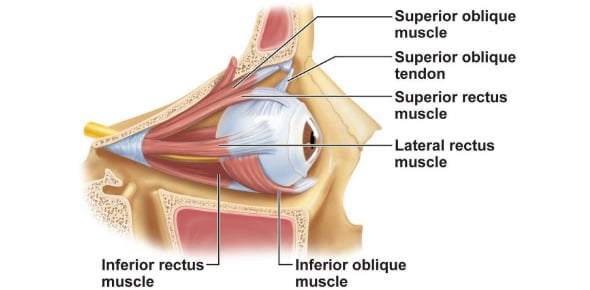The Medial Rectus muscle is the antagonist of the Lateral Rectus muscle and is primarily responsible for moving the eye in an inward direction, toward the nose (adduction).The origin point of the Lateral Rectus muscle is from the Annulus of Zinn and it’s insertion point is into the Sclera of the eye. Superior Oblique. The oculomotor nerve innervates the medial rectus muscle (adductor of the eye), superior rectus and inferior oblique muscles (elevators of the eye), and inferior rectus muscle (depressor of the eye). The trochlear nerve innervates the superior oblique muscle, which is responsible for the downward gaze, especially during adduction.
- Medial Rectus Definition
- Medial Rectus And Lateral Rectus
- Medial Rectus And Inferior Oblique Dmg Definition
The human eye has six eye muscles. They are split into two primary groups: the recti muscles and the oblique muscles. The four recti muscles are the lateral rectus, the medial rectus, the inferior rectus, and the superior rectus while the two oblique muscles are the inferior oblique and the superior oblique.
In this post, we’ll talk about each of the six muscles and discover their function and purpose in the human eye.
Lateral Rectus
The lateral rectus is a muscle of the eye’s orbit. The main function of this muscle is to pull the pupil away from the midline of the body. The word lateral rectus comes from the Latin latus, meaning “side” and rectus, “straight.” Here is more in-depth information on the lateral rectus muscle:
“The lateral rectus originates at the lateral part of the annulus of Zinn, also known as the annular tendon or common tendinous ring, and inserts into the temporal side of the eyeball. The annulus of Zinn is a tendinous ring that surrounds the optic nerve and serves as the origin for four of the six extraocular muscles, excluding the inferior oblique muscle and superior oblique muscle.” (We got that quote from Wikipedia.)


Medial Rectus
The medial rectus is also a muscle of the eye’s orbit. The only function of the medial rectus is to bring the pupil closer to the midline of the body. The word medial rectus comes from the Latin medius, “middle.” Discover more about the medial rectus here:
“As with most of the muscles of the orbit, it is innervated by the inferior division of the oculomotor nerve (Cranial Nerve III). This muscle shares an origin with several other extrinsic eye muscles, the anulus tendineus, or common tendon. It is the largest of the extraocular muscles and its only action is adduction of the eyeball.” (Wikipedia)
Inferior Rectus
The inferior rectus is also a muscle of the orbit. This muscle has multiple functions, mainly helping to extort the eye. The name comes from the Latin, and the word inferior means “lower.” The muscle is on the bottom of the eye, which is why the word inferior is used. Here are more details of the inferior rectus muscle:

“[The inferior rectus muscle] depresses, adducts, and helps extort (rotate laterally) the eye. The inferior rectus muscle is the only muscle that is capable of depressing the pupil when it is in a fully abducted position.” (Wikipedia)
Superior Rectus
The superior rectus is mostly in charge of elevation, which means it helps you look up. It has other functions but that is the primary one.
Again, the superior rectus comes from Latin roots. Superior means “above” and rectus means “straight.”The superior rectus muscle is located on the top of the eye and it helps the eye look up, so the name is fitting.
Superior Oblique
Medial Rectus Definition
The superior oblique muscle is on the upper medial side of the eye. That means it is closer to the nose. The primary job of this muscle is to turn the eye inward. Every eye muscle does multiple jobs, so the superior oblique does contribute to other motions.
Inferior Oblique
Medial Rectus And Lateral Rectus
The inferior oblique has a similar job to the inferior rectus, but it is the muscle that moves the eye upward when the eye is looking in toward the nose, rather than away.
Isn’t it amazing to break down the muscles of the eye to see how the individual parts come together to move the eye smoothly and effectively?
Medial Rectus And Inferior Oblique Dmg Definition
What do you know about the muscles of the eye? Comment any questions you have about the eye’s muscles and we’ll answer them!
